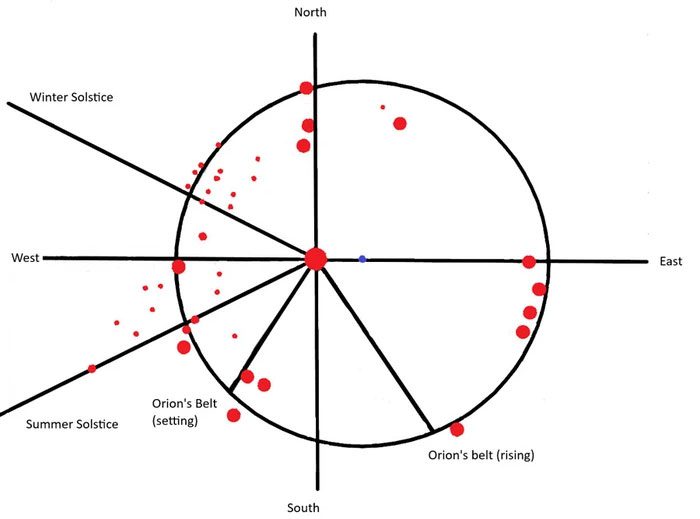The Adam Calendar, possibly the oldest artificial structure still in existence, was discovered in 2003 completely by accident.
Johan Heine, a South African pilot, was flying over Mpumalanga, a mountainous region in the eastern part of the country. However, he was forced to make an emergency landing and crashed into a hillside due to the aircraft suddenly losing control.
Fortunately, Heine was unharmed, but while exiting the plane, he spotted three massive dolomite boulders before him. These gigantic rocks weigh approximately 5 tons each and rise prominently from the ground. Next to them was a colossal circle also made of stone.
This site is situated in an extremely remote location, with limited access. If Johan Heine had not made the emergency landing and discovered it, it is likely that this site would remain hidden to this day.
What Heine found was later confirmed to be a megalithic site constructed by humans in the past, and it may have served as an ancient “calendar” made of stone. Consequently, this site has been named The Adam Calendar.

This site has been named “The Adam Calendar”.
Some hypotheses suggest that this site was built around 300,000 years ago. If this site is indeed that ancient, it could rewrite the history of humankind.
Accordingly, there must have been an incredibly advanced civilization capable of constructing such a massive megalithic site. Thus, some have theorized that ancient aliens were involved in the creation of “The Adam Calendar.”
This megalithic site features an outer stone circle with a diameter of about 30 meters. Inside the circle are several monolithic stones arranged in a complex pattern. The overall layout of the site appears to be constructed according to the arrangement of the stars, leading to the belief that this site is indeed an ancient “calendar.”
In addition to the large circle, there are other structures and stone circles around the site that are built with supplementary arrangements, connected by a series of channels.
Researchers believe that these channels not only connect to The Adam Calendar but also link to many other ruins and ancient terraced agricultural fields in the landscape.
Two upright stones in the center of the circle bear carvings. These stones, along with much of the construction material, seem to have been transported from a very distant location. The original shape of this site remains clearly visible from aerial images.
Another important point is that the area surrounding The Adam Calendar is quite rich in gold resources. Mining shafts are scattered throughout, and even today, the richest gold mine in the world, known as Sheba Gold Mine, is located near this area.
Not only did the gold deposits attract attention in the 1880s, but there is also evidence of ancient civilizations mining minerals—also described in early European documents.
Even today, this calendar functions perfectly as it allows people to track time throughout the day and year by following the shadow of the setting sun.

Initial calculations regarding the dating of this site were made based on the appearance of the Orion constellation. However, many mysteries remain about The Adam Calendar ruins, such as who built them, the nature of their civilization, and how they constructed them with such precise parameters. Perhaps in time, more future studies will piece together this prehistoric mystery.
Initially, the archaeological community showed little interest in Johan Heine’s accidental discovery. But in 2009, the site began to attract more attention from archaeologists.
Initial research uncovered a stone configuration with four main orientations, indicating solstices and equinoxes in a manner similar to Stonehenge.
Geological studies, the erosion processes on the stones, and the development of lichen around them also provided scientists with information for estimating the age of this site. The initial estimate suggested that the site could date from 75,000 to 200,000 years ago, or potentially as much as 300,000 years.
The most recent and intriguing discovery of the stone circles and The Adam Calendar site is the sound frequencies of the tectonic layers beneath. With modern techniques, scientists have successfully detected sound frequencies and measured them with all their acoustic properties.
The sound frequencies of the ground beneath these boulders create resonant shapes akin to flowers as they transmit up to the surface. This has led to the astonishing hypothesis that these stones may also possess electrical conductivity in ways that modern humanity cannot comprehend.
Author Michael Tellinger believes that this site is the oldest of all artificial structures, believed to have been created by a lost civilization.





















































